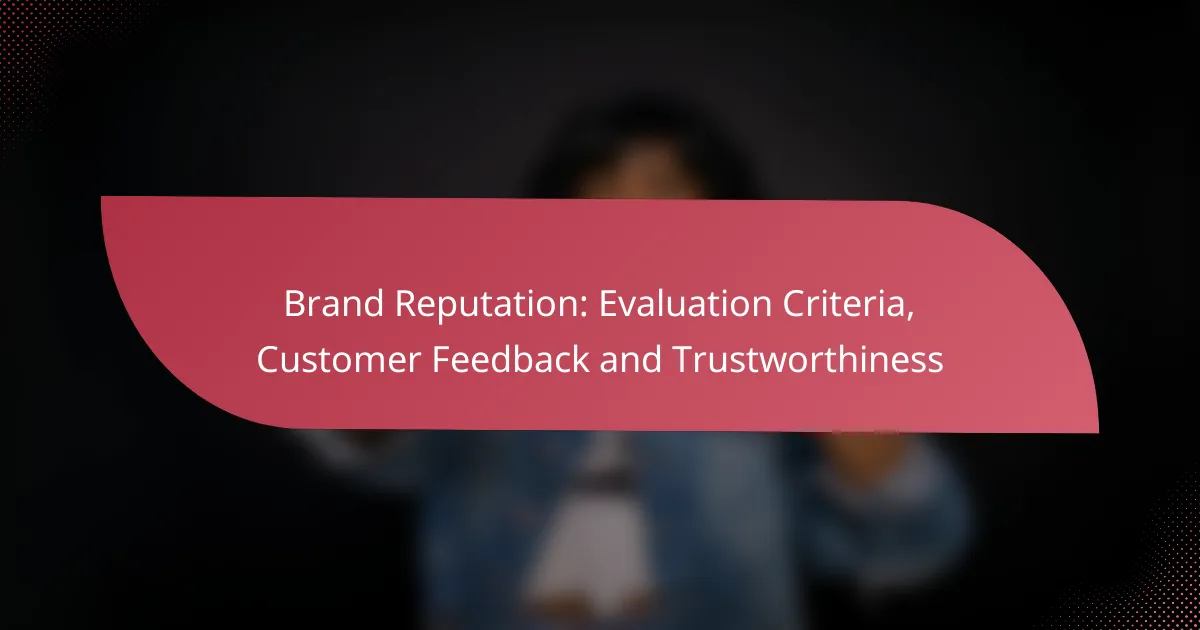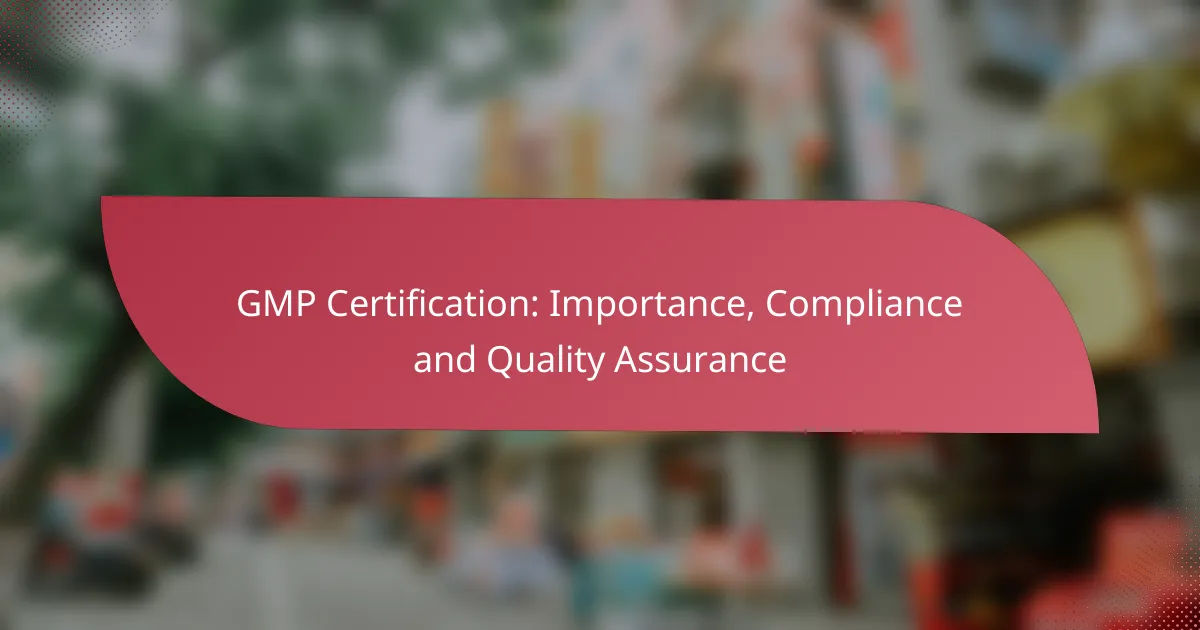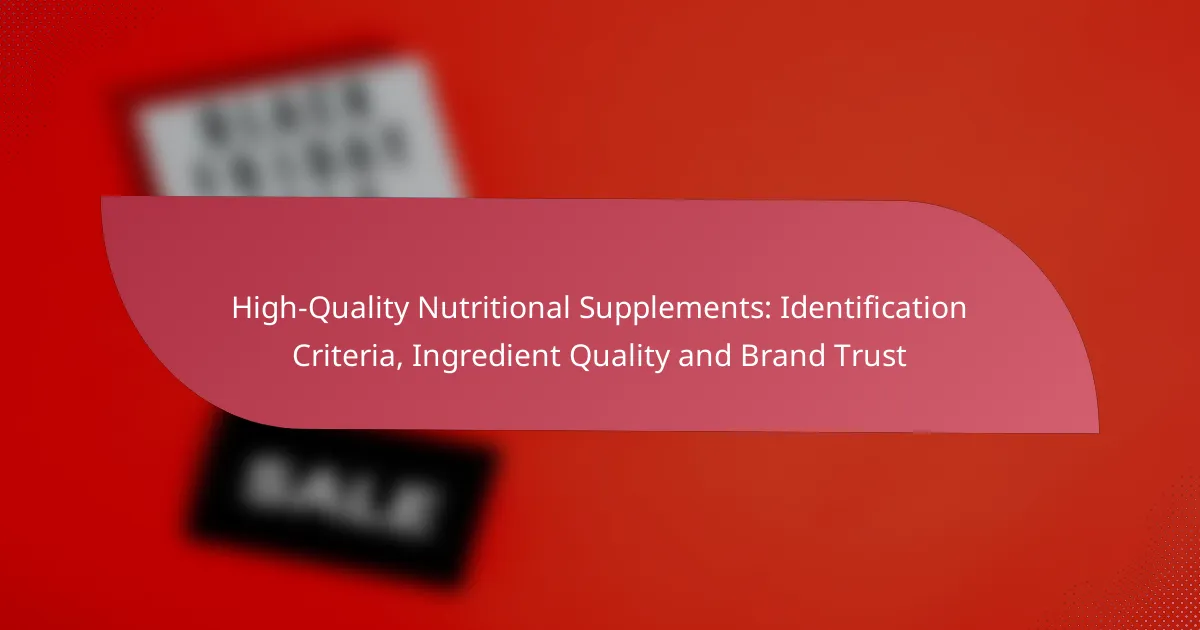Brand reputation is crucial for businesses, as it directly impacts public perception and consumer trust. Evaluating this reputation involves analyzing customer feedback, social media sentiment, and various performance metrics, which together provide insights into a brand’s reliability and standing in the market. By focusing on criteria such as transparency, customer service, and product quality, companies can better understand and enhance their reputation among consumers.

How to evaluate brand reputation effectively?
Evaluating brand reputation involves assessing various factors that contribute to public perception and trustworthiness. Key methods include analyzing customer feedback, monitoring social media sentiment, reviewing third-party scores, and benchmarking against competitors.
Customer reviews analysis
Customer reviews are a vital indicator of brand reputation. Analyzing feedback on platforms like Google, Yelp, or Trustpilot can reveal strengths and weaknesses in products or services. Look for patterns in ratings and comments to identify common themes.
Consider the volume of reviews as well; a brand with hundreds of reviews may provide a more reliable picture than one with only a few. Aim for a balanced view by considering both positive and negative feedback to gauge overall sentiment.
Social media sentiment tracking
Social media sentiment tracking involves monitoring mentions and discussions about a brand across platforms like Twitter, Facebook, and Instagram. Tools such as Hootsuite or Brandwatch can help analyze sentiment trends over time, revealing how public perception shifts.
Pay attention to the context of mentions—positive, negative, or neutral—and the engagement levels they receive. High engagement on negative posts can indicate potential issues that need addressing, while positive interactions can bolster reputation.
Third-party reputation scores
Third-party reputation scores, such as those from the Better Business Bureau (BBB) or Consumer Reports, provide an external assessment of a brand’s reliability. These scores often consider factors like customer complaints, resolution rates, and overall satisfaction.
Regularly check these scores to understand how your brand compares to industry standards. A low score can signal the need for improvement, while a high score can enhance credibility and attract new customers.
Competitor benchmarking
Competitor benchmarking involves comparing your brand’s reputation against similar businesses in your industry. This can highlight areas where you excel or need improvement. Tools like SEMrush or SimilarWeb can provide insights into competitors’ online presence and customer feedback.
Focus on key metrics such as customer satisfaction, review scores, and social media engagement. Understanding where you stand relative to competitors can inform strategies to enhance your brand’s reputation and market position.
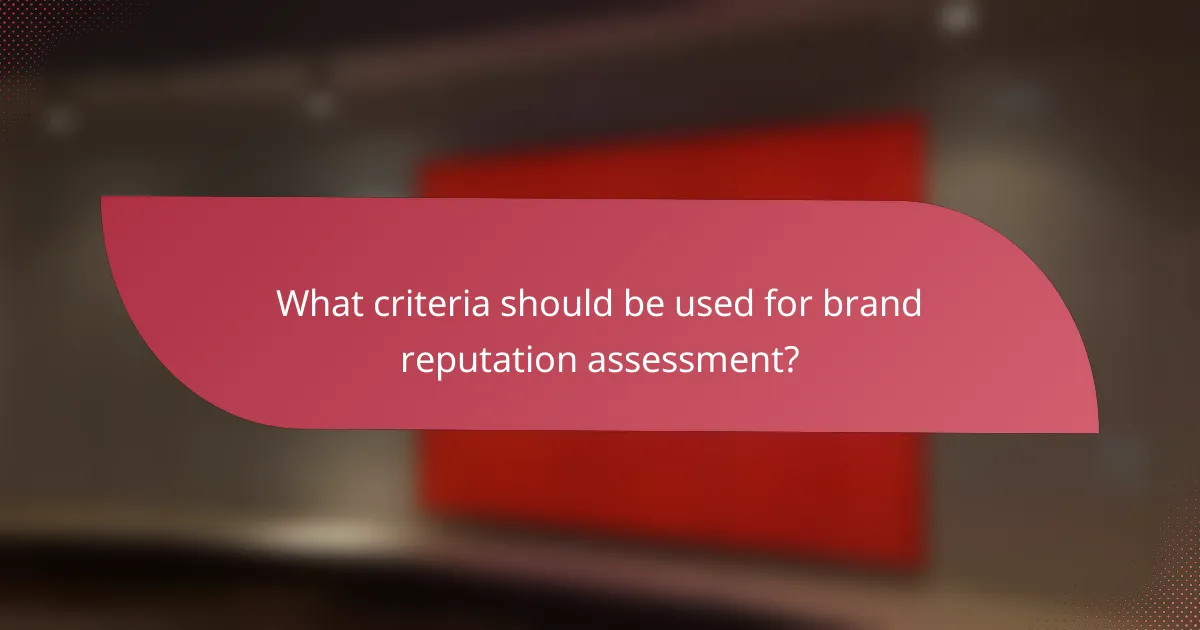
What criteria should be used for brand reputation assessment?
Brand reputation assessment should focus on key criteria that reflect a company’s reliability and customer perception. Evaluating aspects such as transparency, customer service responsiveness, and product quality consistency can provide a comprehensive view of a brand’s standing in the market.
Transparency and honesty
Transparency and honesty are vital for building trust with customers. Brands should openly share information about their practices, sourcing, and pricing, which helps consumers make informed decisions. For instance, a company that clearly communicates its supply chain processes is likely to earn customer loyalty.
To assess a brand’s transparency, look for clear policies on data usage, ethical sourcing, and environmental impact. Brands that proactively disclose this information often enjoy a stronger reputation and customer trust.
Customer service responsiveness
Customer service responsiveness is a critical factor in brand reputation. Quick and effective responses to inquiries or complaints can significantly enhance customer satisfaction. Brands should aim to address customer issues within a few hours, ideally offering multiple channels for support, such as phone, email, and live chat.
Monitoring response times and customer feedback can help gauge service effectiveness. A brand that consistently resolves issues promptly is more likely to maintain a positive reputation and encourage repeat business.
Product quality consistency
Product quality consistency is essential for maintaining a strong brand reputation. Customers expect reliable performance and durability from products, and any deviation can lead to dissatisfaction. Brands should implement quality control measures to ensure that products meet established standards consistently.
To evaluate product quality, consider customer reviews and ratings across various platforms. A brand that consistently receives high marks for quality is likely to foster greater trust and loyalty among its customer base.
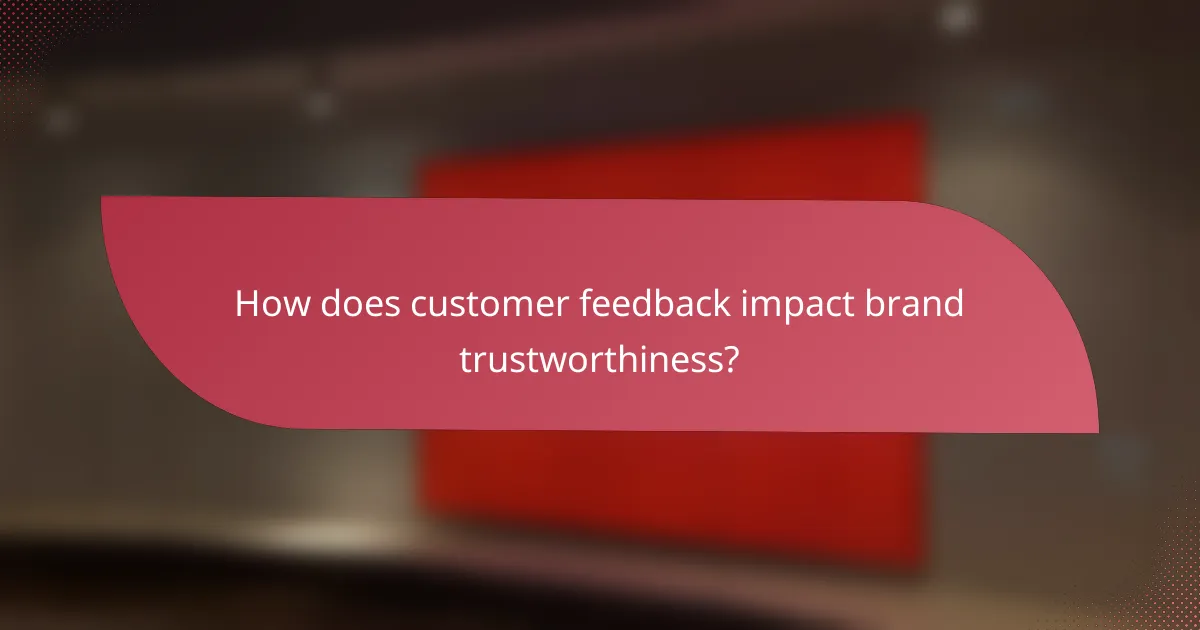
How does customer feedback impact brand trustworthiness?
Customer feedback significantly influences brand trustworthiness by shaping perceptions and guiding consumer decisions. Positive feedback can enhance a brand’s reputation, while negative reviews can undermine it, affecting potential customers’ trust levels.
Influence of positive reviews
Positive reviews build credibility and foster trust in a brand. When customers share favorable experiences, it signals to others that the brand delivers on its promises, often leading to increased sales and customer loyalty.
Brands can leverage positive feedback by showcasing it on their websites and social media platforms. Highlighting testimonials and high ratings can attract new customers and reinforce existing relationships.
Consequences of negative feedback
Negative feedback can have a detrimental impact on a brand’s reputation. A few critical reviews can deter potential customers, as many consumers tend to trust negative feedback more than positive comments.
Brands should actively monitor feedback and address concerns promptly. Responding to negative reviews with empathy and solutions can mitigate damage and demonstrate a commitment to customer satisfaction.
Role of testimonials in decision-making
Testimonials serve as powerful endorsements that can sway consumer decisions. When potential customers see authentic experiences from others, it can significantly influence their purchasing choices.
To maximize the impact of testimonials, brands should collect and display a diverse range of customer experiences. Including specific details about the product or service can enhance credibility and help potential buyers relate to the feedback.

What tools can help monitor brand reputation?
To effectively monitor brand reputation, businesses can utilize various tools that track mentions, reviews, and social media interactions. These tools provide insights into customer perceptions and help identify areas for improvement.
Google Alerts for brand mentions
Google Alerts is a free tool that notifies users when their brand is mentioned online. By setting up alerts for specific keywords related to your brand, you can receive email updates whenever new content is published, allowing for timely responses to both positive and negative mentions.
To get started, simply enter your brand name and relevant keywords into Google Alerts, and choose how often you want to receive notifications. This tool is particularly useful for monitoring news articles, blogs, and forums where discussions about your brand may occur.
Trustpilot for customer reviews
Trustpilot is a popular platform for collecting and displaying customer reviews. It allows businesses to gather feedback from customers, which can enhance credibility and provide insights into customer satisfaction. Positive reviews can be showcased on your website, while negative feedback can be addressed to improve services.
To maximize the benefits of Trustpilot, encourage customers to leave reviews after their purchase. Responding to reviews, both positive and negative, demonstrates that you value customer feedback and are committed to improving their experience.
Hootsuite for social media monitoring
Hootsuite is a comprehensive social media management tool that enables businesses to monitor brand mentions across various platforms. By tracking conversations and engagement, you can gain insights into how your brand is perceived in real-time.
Set up streams for different social media channels to keep an eye on mentions, comments, and hashtags related to your brand. This allows for quick engagement with customers and helps identify trends or issues that may affect your brand reputation.
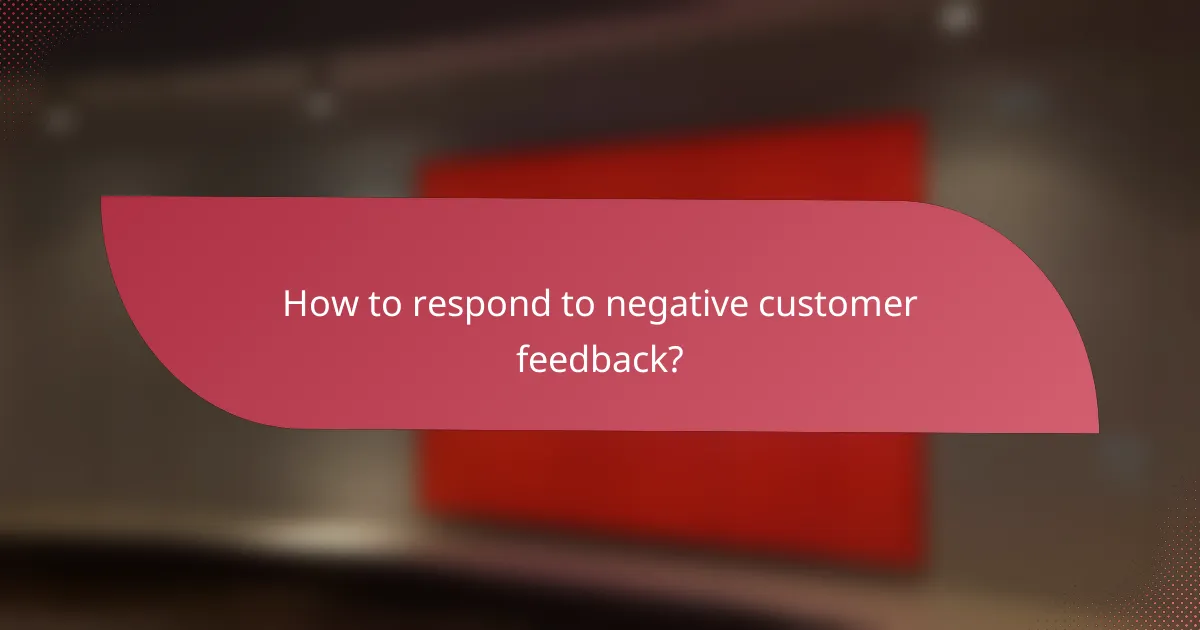
How to respond to negative customer feedback?
Responding to negative customer feedback is crucial for maintaining brand reputation and trust. A prompt, thoughtful response can turn a dissatisfied customer into a loyal advocate.
Apologizing and acknowledging issues
Start by sincerely apologizing for the customer’s experience. Acknowledging the issue shows that you value their feedback and understand their concerns. For example, saying “We’re sorry to hear that your order was delayed” can help diffuse tension.
Make sure to personalize your response to reflect the specific situation. This demonstrates that you are not just sending a generic reply but are genuinely interested in resolving the problem.
Offering solutions and compensation
After acknowledging the issue, provide clear solutions or compensation options. This could include a refund, replacement, or discount on future purchases. For instance, offering a 20% discount on their next order can encourage the customer to give your brand another chance.
Be transparent about what you can offer and ensure that it aligns with your company’s policies. This builds trust and shows that you are committed to customer satisfaction.
Encouraging offline discussions
Invite the customer to discuss their concerns further through private channels, such as email or phone. This approach allows for a more personalized conversation and can help resolve issues more effectively. For example, you might say, “Please reach out to our customer service team at [email protected] for further assistance.”
Encouraging offline discussions can also prevent public disputes and protect your brand image. Ensure that your contact information is easily accessible and that your team is prepared to handle these conversations professionally.

What are the emerging trends in brand reputation management?
Emerging trends in brand reputation management focus on transparency, customer engagement, and the use of technology to monitor and respond to feedback. Companies are increasingly leveraging social media and data analytics to shape their reputations proactively.
Importance of customer feedback
Customer feedback is crucial for understanding public perception and identifying areas for improvement. Brands that actively seek and respond to feedback can enhance their reputation and build trust with their audience.
Utilizing surveys, social media interactions, and online reviews allows businesses to gather insights into customer experiences. Regularly analyzing this feedback can help brands adapt their strategies and address concerns promptly.
Building trustworthiness
Trustworthiness is essential for maintaining a positive brand reputation. Brands can build trust by being transparent about their practices, delivering consistent quality, and engaging authentically with customers.
Establishing clear communication channels and providing reliable customer service can further enhance trust. Brands should also be prepared to address any issues openly and take responsibility for mistakes to reinforce their credibility.
Leveraging technology
Technology plays a significant role in modern reputation management. Tools such as social listening platforms and reputation management software enable brands to monitor their online presence and respond to customer feedback in real-time.
Implementing these technologies can help brands identify trends and potential crises early. Additionally, utilizing analytics can provide valuable insights into customer sentiment, allowing for more informed decision-making.
